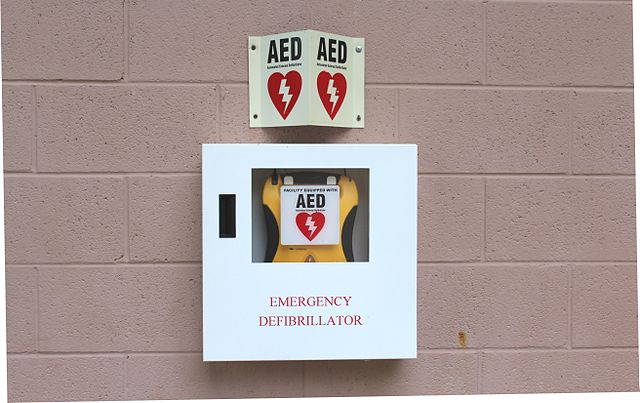What Is an AED?
An automated external defibrillator administers electric shocks to a person’s heart when they have gone into cardiac arrest. It measures the heart’s rhythm and revives the muscle if needed.
During cardiac arrest, the heart is beating ineffectively and erratically. The organs quickly become deprived of blood and begin to shut down. Unless the heart’s rhythm is restored to normal, severe organ damage or death will occur.
By administering both CPR and attaching an AED to the victim’s chest, bystanders or emergency professionals can keep blood pumping to the vital organs, saving the person’s life.
Basic Modes and Features
Knowing what AED to get involves getting to know all the different types available, and which model has the modes and features you’re looking for.
AEDs come as either automatic or semiautomatic. With an automatic model, the unit senses when the electrical shock is needed and delivers it without any initiation from the bystander. A semiautomatic requires the bystander to press a button to administer the shock.
While each type has its advantages, if you’re looking for an option for a business or a home where emergency medical technicians with years of training aren’t going to be on hand, you’re probably better off choosing an AED that’s automatic.
Also, consider who will be using the AED. Some models come with adult-sized pads, but give you an option to purchase pads sized for children after the fact. If you aren’t likely to administer treatment to a child, this may not be a concern, but for schools, it’s definitely necessary.
Finally, consider where you’ll be using the AED. If you will be outdoors where the unit may be exposed to or have to operate in rough weather, consider purchasing a water-resistant machine.
Easy Operation Is Key
Regardless of which model you get, make sure that you can easily operate the AED. A complex process will only seem more difficult in times of stress and urgency. Some AED models will monitor your compressions and give you feedback on whether you are pushing hard and fast enough based on its readings of the heart rhythms, but consider getting official CPR training as well.
Battery Type and Maintenance
AEDs use different types of batteries, all with varied life expectancies. While emergency medical responders typically have rechargeable systems because they anticipate using them quite often, your model likely will have lithium-ion batteries that must be checked and replaced on a regular basis to ensure they’ll work when you need them to. Choosing an AED isn’t the easiest task, but once you’ve found an option that is suited to your home or office, you’ll be satisfied you took the time and money to purchase a product that’s going to last and potentially save the lives of your co-workers, your loved ones or even you.
